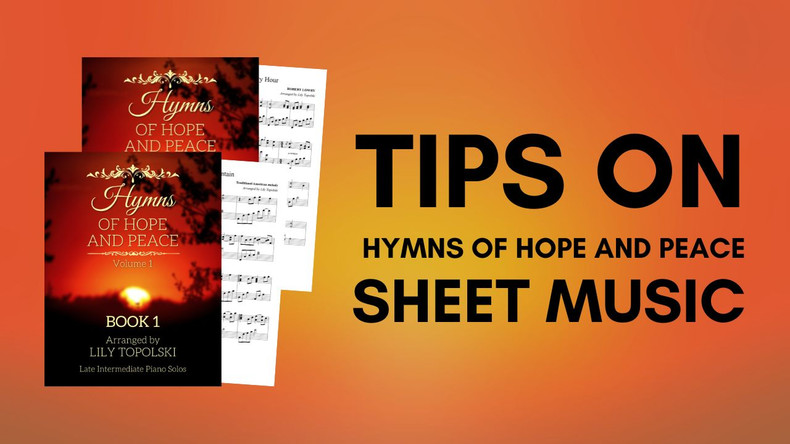Update as of 1/29/2023: There is now a second part to this blog post, Tips on How to Use Hymns of Hope and Peace Sheet Music, Part 2, to share an exciting update about this sheet music!
You may have noticed a pattern in my Hymns of Hope and Peace series. On the CD as well as in the sheet music books, each song starts out in the same key as the previous song ended in (with the exception of one; I'll get into that later). In this post I'm going to explain why I did that and how you can utilize it in the sheet music books to play in church!
What is “Hymns of Hope and Peace”?
In case you happen to be reading this and you are unfamiliar with the Hymns of Hope and Peace series, I'll quickly explain. Hymns of Hope and Peace: Volume 1 is an hour long CD that I recorded. All of the songs on it are quiet, piano only hymns and it's intended to be able to be played as background music. That being said, it would also hopefully work well for preludes in churches, so I notated sheet music for each song on the CD. There were so many songs that I had to break up volume 1 into two books, Hymns of Hope and Peace: Volume 1, Book 1 and Hymns of Hope and Peace: Volume 1, Book 2.
How to Use the Sheet Music
As I said before, each song in these books (with one exception) starts out in the key that the previous song ended in. This was done intentionally, so that the player can make the music be one long medley. For example, Be Thou My Vision / In the Garden, the first song in the series, ended in the key of Db. So, the next song, It Is Well with My Soul, starts out in the key of Db. With a little fiddling with the songs, you are able to make them blend together. For these two specific songs, you can play through to measure 119 of Be Thou My Vision / In the Garden and then jump over to the last note of measure 6 in It Is Well with My Soul. This will make it sound like one long medley. With a little bit of messing around, you should be able to do something like this with every song in the book. This allows you to play a continuous medley, starting and stopping wherever you want.
However, there is one rule breaker in book 1! There's still a work-around, though.
The Exception to the Rule
Sweet Hour of Prayer ends in the key of D. The next song, There Is a Fountain actually starts in the key of F. I guess I got a little bored of playing in the key of D! There are several ways you could transition from the key of D to the key of F, but I have put the chord progression that I came up with below. For those of you who are music theory nerds, I'll explain how I got to that progression using some theory. If you want the quick answer though, you can scroll down and see what chords I used!
By using a little bit of theory, we can actually add just a few chords to the end of Sweet Hour of Prayer that will lead into the key of F. The easiest way to get to a new key is to play the fifth chord of the new key. The way to find the fifth chord of any key is to start that key's scale and count five notes. F-G-A-Bb-C. So the fifth chord of the key of F is C. Make that C a C7 chord and it will lead you straight to the F chord. That means that basically, the main chords you will need to play are: D (the ending chord of Sweet Hour of Prayer), C7, and F (the beginning chord of There Is a Fountain). To make those chords sound a little more melodic, try adding some "color chords". For example, one chord progression that works in between these songs is:
D A/#C F/C Bbmaj7/C C7 F
If you come up with another chord progression, I'd love to hear what it is! Make sure to leave a post in the reviews section of Book 1 here if you would like to share it!
Hopefully those tips made sense to you and will help you be able to flow through the songs in Hymns of Hope and Peace!
Blessings,
Lily

